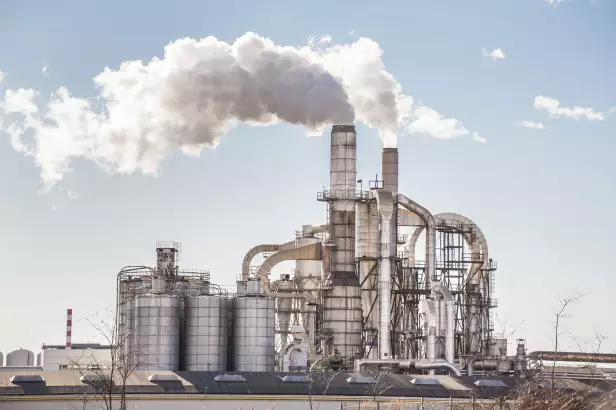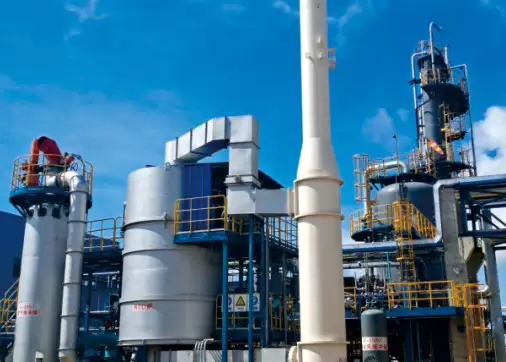How to Integrate an RTO into an Existing Air Pollution Control System?
Введение
Regenerative Thermal Oxidizers (RTO) are widely used in industrial processes to control air pollution. Many industries have integrated RTOs into their air pollution control systems to reduce emissions of hazardous air pollutants and volatile organic compounds. However, integrating an RTO into an existing air pollution control system can be complex and requires careful planning. In this article, we will explain how to integrate an RTO into an existing air pollution control system.
Assessing Your Air Pollution Control System
Before integrating an RTO into an existing air pollution control system, it is essential to assess the current system’s effectiveness. It is necessary to determine the current system’s efficiency in controlling emissions and the type and amount of pollutants that the system is designed to control. The assessment should also identify any problems or limitations of the current system that may require modifications or upgrades to integrate the RTO.
Assessing Emission Levels
The first step in assessing your air pollution control system is to determine the emission levels of your facility. You can do this by measuring the concentration of pollutants in the process exhaust stream. The emission levels will help you determine the size and type of RTO required to control emissions adequately.
Assessing Current Control Equipment
The next step is to assess the current air pollution control equipment and determine if it is compatible with an RTO. You should consider the age, design, and capacity of the equipment. If the current equipment is outdated or incompatible with the RTO, you may need to replace or modify it.
Assessing Operating Costs
It is also essential to assess the operating costs of your air pollution control system and the potential costs of integrating an RTO. The expenses to consider include energy consumption, maintenance, and repair costs, and the cost of any necessary upgrades or modifications.
Integrating an RTO into Your Air Pollution Control System
Once you have assessed your air pollution control system, you can begin integrating the RTO. The following steps will guide you through the process.
1. Determine the Type and Size of RTO Required
Using the information from your assessment, determine the type and size of RTO required to control emissions adequately. The size and type of RTO will depend on the amount and type of pollutants emitted by your facility.
2. Design the Integration Plan
Design a plan to integrate the RTO into your existing air pollution control system. The plan should include the necessary modifications to your current air pollution control system and specify the location of the RTO.
3. Modify Existing Equipment
Modify any existing equipment, such as ductwork or fans, to make them compatible with the RTO. This may involve adding or removing components to ensure proper flow and pressure.
4. Install the RTO
Install the RTO in the specified location and connect it to the process exhaust stream. Ensure that the installation complies with all applicable environmental regulations.
5. Test the System
Test the integrated system to ensure that the RTO is effectively controlling emissions. This may involve testing for pollutants before and after the RTO and adjusting the system as necessary.
Заключение
Integrating an RTO into an existing air pollution control system can be complex and requires careful planning. By assessing your current system, determining the type and size of RTO required, and designing a comprehensive integration plan, you can successfully integrate an RTO and reduce emissions of hazardous air pollutants and volatile organic compounds. It is crucial to follow all applicable environmental regulations and conduct thorough testing to ensure that the integrated system is effective in controlling emissions.


Введение в компанию
We are a high-tech equipment manufacturing enterprise specializing in the comprehensive treatment of volatile organic compounds (VOCs) and carbon reduction and energy-saving technology for air pollution control systems.
Core Technology
Our company possesses four core technologies: thermal energy, combustion, sealing, and automatic control. We have the capabilities for temperature field simulation, air flow field simulation modeling, ceramic heat storage material performance evaluation, molecular sieve adsorbent material selection, and high-temperature combustion and oxidation testing of VOCs organic compounds.
Team Strength
We have an RTO technology research and development center and an exhaust gas carbon reduction engineering technology center in Xi’an, as well as a 30,000 m2 production base in Yangling. We are a leading manufacturer of RTO equipment and molecular sieve rotary wheel equipment worldwide. Our core technology team comes from the Liquid Rocket Engine Research Institute of the China Academy of Aerospace Liquid Propulsion System (CALP). We currently have over 360 employees, including more than 60 research and development technical backbones, including 3 senior engineers, 6 senior engineers, and 47 PhDs in thermodynamics.
Core Products
Our core products include the regenerative thermal oxidizer (RTO) with rotary valve heat storage and the molecular sieve adsorption and concentration rotary wheel. Combined with our expertise in environmental protection and thermal energy system engineering, we can provide customers with comprehensive solutions for industrial waste gas treatment, carbon reduction, and heat energy utilization under various operating conditions.

Сертификаты, патенты и награды
- Intellectual Property Management System Certification
- Quality Management System Certification
- Environmental Management System Certification
- Construction Industry Enterprise Qualification
- High-tech Enterprise
- Patent for Rotary Valve in RTO
- Patent for Rotary Wheel Heat Storage Incineration Equipment
- Patent for Disc Molecular Sieve Rotary Wheel
How to Choose the Right RTO Equipment
To select the appropriate RTO equipment, consider the following factors:
- Determining the characteristics of the waste gas
- Understanding local regulations and emission standards
- Evaluating energy efficiency
- Taking into account operation and maintenance
- Анализ бюджета и затрат
- Choosing the suitable RTO type
- Considering environmental and safety factors
- Performing performance testing and verification

RTO Air Pollution Control Service Process
Our RTO air pollution control service process includes:
- Preliminary consultation, on-site inspection, and needs analysis
- Solution design, simulation and modeling, solution review
- Customized production, quality control, factory testing
- Услуги по установке, вводу в эксплуатацию и обучению на месте
- Регулярное обслуживание, техническая поддержка и поставка запасных частей
We are a one-stop solution for RTO air pollution control, with a professional team that customizes RTO solutions for our clients.
About the Author
Автор: Мия
